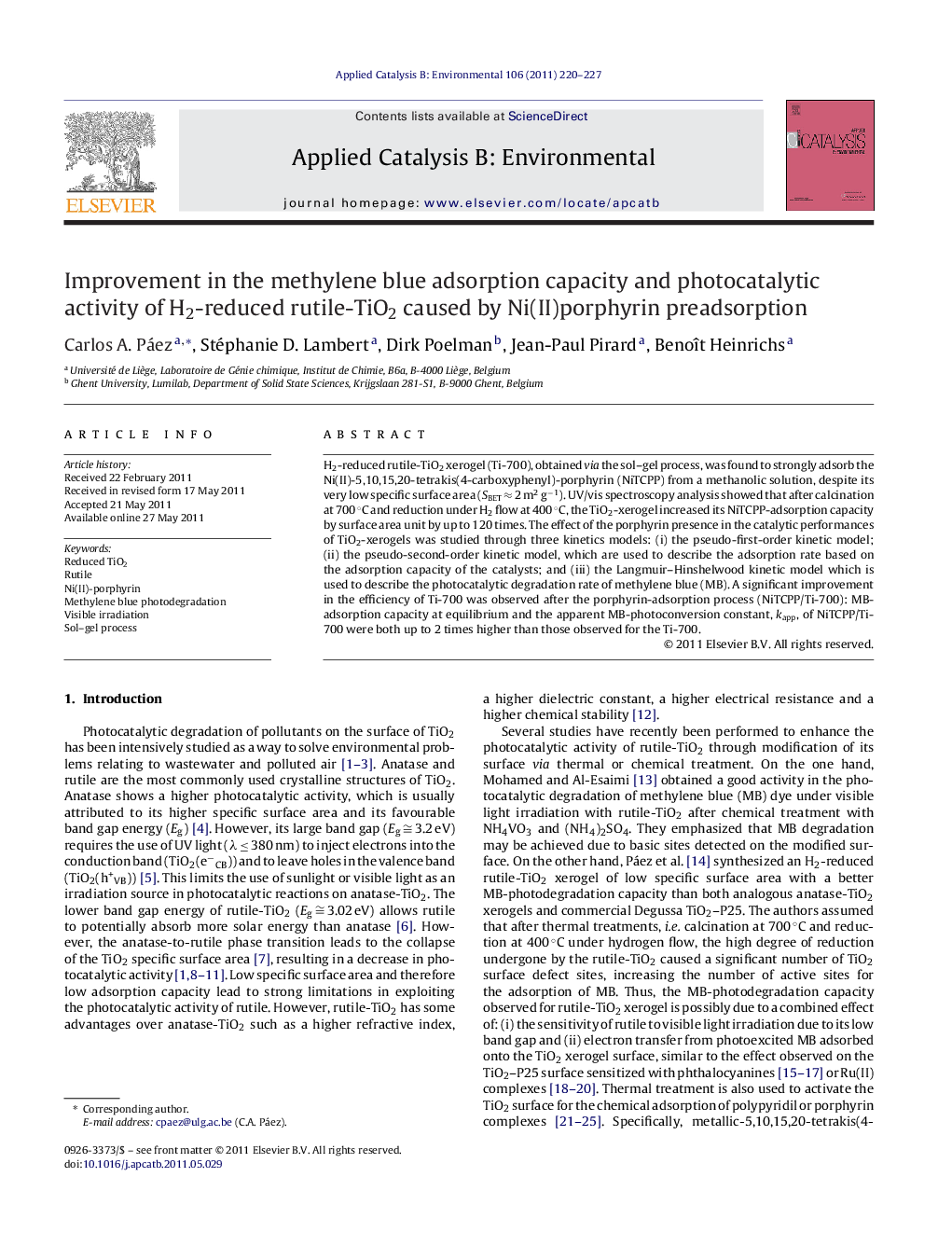| کد مقاله | کد نشریه | سال انتشار | مقاله انگلیسی | نسخه تمام متن |
|---|---|---|---|---|
| 47064 | 46457 | 2011 | 8 صفحه PDF | دانلود رایگان |

H2-reduced rutile-TiO2 xerogel (Ti-700), obtained via the sol–gel process, was found to strongly adsorb the Ni(II)-5,10,15,20-tetrakis(4-carboxyphenyl)-porphyrin (NiTCPP) from a methanolic solution, despite its very low specific surface area (SBET ≈ 2 m2 g−1). UV/vis spectroscopy analysis showed that after calcination at 700 °C and reduction under H2 flow at 400 °C, the TiO2-xerogel increased its NiTCPP-adsorption capacity by surface area unit by up to 120 times. The effect of the porphyrin presence in the catalytic performances of TiO2-xerogels was studied through three kinetics models: (i) the pseudo-first-order kinetic model; (ii) the pseudo-second-order kinetic model, which are used to describe the adsorption rate based on the adsorption capacity of the catalysts; and (iii) the Langmuir–Hinshelwood kinetic model which is used to describe the photocatalytic degradation rate of methylene blue (MB). A significant improvement in the efficiency of Ti-700 was observed after the porphyrin-adsorption process (NiTCPP/Ti-700): MB-adsorption capacity at equilibrium and the apparent MB-photoconversion constant, kapp, of NiTCPP/Ti-700 were both up to 2 times higher than those observed for the Ti-700.
Figure optionsDownload as PowerPoint slideHighlights
► A high surface coverage of NiTCPP in TiO2-xerogel (Ti-NC) was achieved by calcination at 700 °C and high temperature reduction at 400 °C under hydrogen flow.
► Calcination/reduction treatment also caused an increase in the number of TiO2-surface active sites for the NiTCPP-adsorption.
► The presence of NiTCPP-molecules in the H2-reduced rutile-TiO2 xerogel surface led to a significant enhancement in its MB-adsorption capacity. This result was probably achieved due to the generation of new rutile-TiO2 surface active sites for MB-adsorption with high electronic density, such as carboxy-porphyrin substituent groups.
► The presence of NiTCPP-molecules in the H2-reduced rutile-TiO2 xerogel surface led to a significant enhancement in its MB-photocatalytic capacity, under visible light irradiation. This result could be due to a combined effect of the potential photosensitivity of the rutile-TiO2 band gap, the increase in MB-adsorption capacity and the electron transfer from photo-excited porphyrin to the surface of Ti-700.
Journal: Applied Catalysis B: Environmental - Volume 106, Issues 1–2, 21 July 2011, Pages 220–227